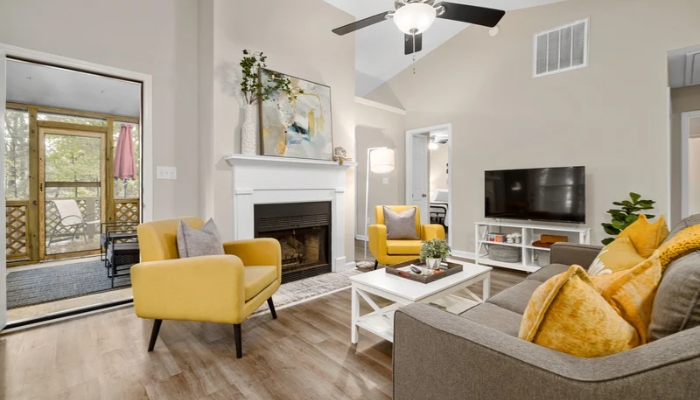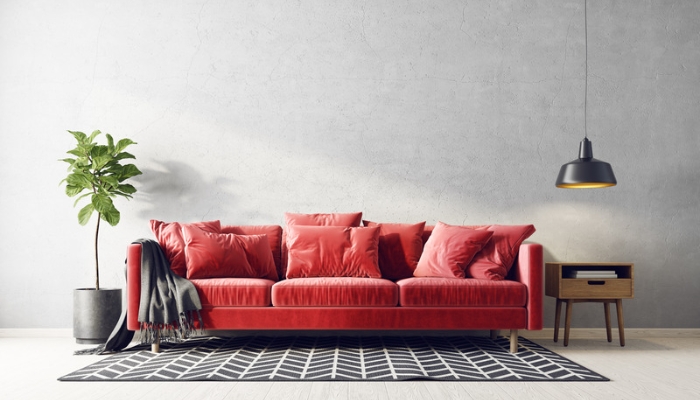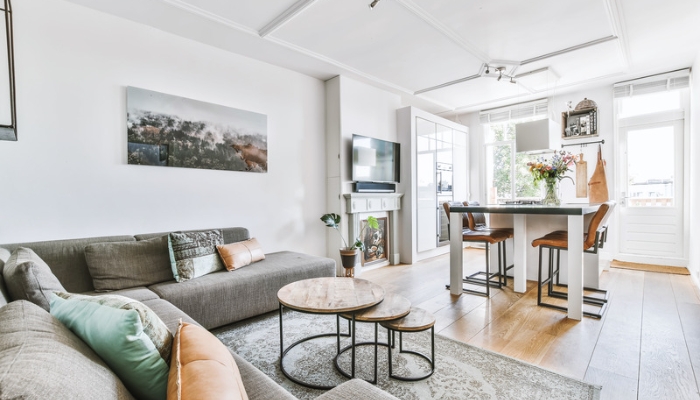Ever found yourself admiring a room that effortlessly blends a modern sofa with a rustic coffee table, and wondered how it all came together? Well, you're not alone. The art of mixing and matching furniture styles can seem like a mystery, but guess what? It's a mystery we're about to solve! We're here to share some insider tips and tricks that will help you create a cohesive, personalized look in your home. So, buckle up and get ready to transform your space into the dream home you've always wanted!

Understanding Different Furniture Styles
Before we dive into the art of mixing and matching, it's essential to understand the different furniture styles that you might be working with. Each style has its unique characteristics, and knowing these can help you make informed decisions when it comes to combining them.
- Modern: This style is all about simplicity and clean lines. Modern furniture often features neutral colors and materials like steel, glass, and metal.
- Traditional: Traditional furniture is characterized by classic designs and rich detailing. Think ornate carvings, plush fabrics, and dark, polished wood.
- Rustic: Rustic furniture embraces the beauty of nature. It often features raw, unfinished materials like wood and stone and has a warm, cozy vibe.
- Industrial: Industrial style takes inspiration from old factories and industrial spaces. It features materials like metal and wood and often incorporates exposed architectural elements.
- Mid-Century Modern: This style, popular in the mid-20th century, is known for its sleek lines, organic shapes, and functionality. It often features wood and a mix of different materials.
- Scandinavian: Scandinavian furniture is characterized by simplicity, minimalism, and functionality. It often features light colors, natural materials, and clean, rounded lines.
Understanding these styles is the first step towards successfully mixing and matching them. Remember, there's no rule that says you can only stick to one style. The beauty of interior design lies in its flexibility and the ability to create a space that's uniquely you. So, let's move on to how you can start blending these styles together!
Choose a Base Style
Now that we've got a handle on different furniture styles, it's time to choose a base style for your room. This is the style that will dominate your space and set the overall tone. It's like the canvas that the rest of your design will build upon.
Choosing a base style is a personal decision and should reflect your tastes and lifestyle. Do you love the clean lines and simplicity of modern furniture? Or do you prefer the cozy, natural vibe of rustic pieces? Maybe you're drawn to the classic elegance of traditional furniture. Whatever style speaks to you, that's your base.
Incorporating a Second Style
With your base style established, it's time to shake things up a bit by incorporating a second style. This is where the "mixing" in "mixing and matching" comes into play. Adding elements of a second style can bring a dynamic, eclectic feel to your space, making it more interesting and personalized.
When choosing a second style, consider how it will complement your base style. You want to create a sense of harmony and cohesion, not confusion. Here are a few different directions you could go:
- Find Common Ground: Look for styles that share some common elements with your base style. If your base style is modern, for example, you might choose mid-century modern as your second style, as both favor clean lines and functional design.
- Contrast is Key: Choose a second style that offers a contrast to your base style. This could be in terms of color, texture, or form. The contrast will add visual interest and prevent your space from looking too uniform.
- Less is More: When incorporating a second style, a little can go a long way. You don't need to have a 50/50 split between your base and second style. Even just a few key pieces in the second style can make a big impact.
Remember, the goal here is to create a space that reflects your unique tastes and personality. So don't be afraid to experiment and have fun with it!

Layering Textures
One of the most effective ways to create a rich, visually interesting space is by layering textures. Different furniture styles often come with their own set of characteristic textures, and layering these can add depth and complexity to your design.
For example, if you've chosen a modern base style with lots of sleek, smooth surfaces, you might layer in some rustic elements with rougher textures, like a chunky knit throw or a reclaimed wood coffee table. These contrasting textures can help to soften the modern style's sometimes stark feel, making the space feel more inviting.
When layering textures, balance is key. Too much of one texture can overwhelm the space, while too little might not make enough of an impact. Start with your big pieces of furniture, like your sofa or bed, and then work in different textures with smaller pieces and accessories.
Incorporating Complementary Colors
Color plays a crucial role in tying together different furniture styles. It can create a sense of cohesion, even when you're mixing styles that might not typically go together. The key is to choose a color palette that complements both your base style and the secondary style you're incorporating.
When choosing your color palette, also consider the mood you want to create in your space. Warm colors like red, orange, and yellow can create a cozy, inviting atmosphere, while cool colors like blue, green, and purple can create a calm, serene space. Neutrals work with any style and can help to balance out your more vibrant color choices.

Choosing Versatile Pieces
When mixing and matching furniture styles, versatility is your best friend. Choosing pieces that can work in a variety of different styles will give you more flexibility, make it easier to create a cohesive look, and give you an advantage if you want to change your base style down the line. Here are a few types of versatile pieces that can be great additions to any style mix:
- Neutral Sofas: A sofa in a neutral color can serve as a blank canvas that allows the other, more style-specific pieces in your room to shine.
- Wooden Coffee Tables: Wood is a material that can work in a variety of styles and provide a touch of warmth and natural beauty in any room.
- Metal Side Tables: A sleek metal side table can fit into a variety of styles; it can add a touch of modern elegance to a room, or a touch of industrial chic.
- Upholstered Dining Chairs: An upholstered dining chair works in many styles, plus, you can easily change the look with different upholstery.
Balancing Proportions
When mixing and matching furniture styles, it's important to keep an eye on proportions. This means considering the size and scale of your furniture pieces in relation to each other and the room itself. Here are a few tips to help you achieve balance:
- Mix Large and Small: All large and bulky furniture can make the room feel overcrowded; all small and delicate can make the room feel sparse! Try to mix large, statement pieces with smaller, more delicate ones for a balanced look.
- Consider Height: Mixing different heights can add interest and energy to a room (you could pair a tall bookcase with low seating, for example).
- Balance Styles: While it's fun to mix different styles, try to ensure that no one style dominates.
And there you have it - your guide to mixing and matching furniture styles like a pro! Remember, the key to a successful design is balance. Whether it's balancing colors, textures, or proportions, it's all about creating a harmonious blend of elements that reflect your unique style and taste. So, don't be afraid to experiment and have fun with it. If you’re ready to change up your style, we’re here for you! Contact us today and we’ll have you on the way to the home of your dreams.
